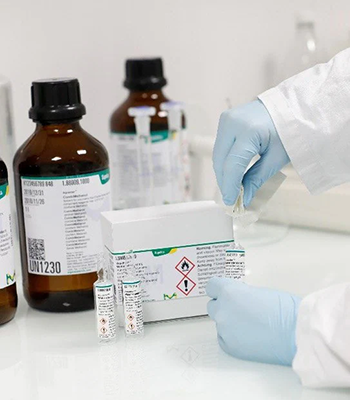Titration & Karl Fischer
Analytical Chemistry
Titration & Karl Fischer

WHAT IS TITRATION?
Titration is a quantitative, analytical technique in which a solution of known concentration, titrant, is used to determine the exact concentration of an unknown compound or purity of a substance. During a titration, the titrant is added dropwise to the dissolved sample, either manually with a glass burette or with a titrator. The titration is complete when enough titrant has been added to react with all the analyte in the sample. An excess of titrant ions is identified either through an indicator color change or change in the electric potential. This point for the completion of the chemical reaction is called the ‘equivalence point’ or ‘endpoint’. Ultimately, the exact amount of the analyte can be calculated from the volume of titrant consumed.
KARL FISCHER (KF) TITRATION
Karl Fischer titration is a widespread method used in quality and in-process control, production, research, and development to determine the amount of water in solid, liquid, or gas samples. Water can adversely affect quality, stability, and other physical and chemical properties of raw materials, intermediates, and finished goods. This rapid and accurate method can quantify water content in a variety of substances in concentrations from 10 ppm to 100%. Precise water determination is required by pharmacopoeias, food regulations, ISO guidelines, and ASTM (American Society for Testing and Materials) methods to ensure the quality and stability of raw materials and finished products.
KARL FISCHER TITRATION METHODS
Both volumetric and the coulometric Karl Fischer titration methods use a bi-potentiometric endpoint detection to quantify iodine consumed by water in the sample. An excess of iodine in the titration cell leads to a potential change, indicating the end of the titration. At this point, the addition or generation of iodine is stopped. The coulometric method is preferred for low water content and for liquid samples; the volumetric method is used for solid and liquid samples and can be used for higher water content as well.


